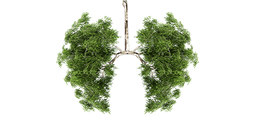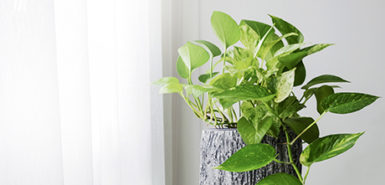
Achoo!
Got allergies?
Actually, you don’t. No, really, you don’t.
It’s true that runny nose, itchy, watery eyes and sneezing are listed on many over-the-counter medications labels claiming allergy relief, yet they’re technically barking up the wrong tree.
“The only way to know if you truly have an allergy to something is to be tested,” said Raymond Gonzalez, MD, of Spectrum Health Medical Group Allergy & Immunology. “The symptoms we naturally associate with allergies are caused by a chronic inflammation of the upper airway called rhinitis. An allergy can contribute to its manifestation, but just because you have rhinitis does not confirm that you are allergic to anything. “
Dr. Gonzalez’s colleague and physician assistant, Lisa Heyboer, PA-C, added that a common misconception is that if you’re spring cleaning and your rhinitis symptoms flare, that you must be allergic to dust mites.
“Dust and small particles are airway irritants and will provoke symptoms with or without an allergy,” Heyboer said. “Similarly, sneezing and itchy eyes while mowing the lawn doesn’t indicate a grass allergy—it could be allergy to anything that’s getting stirred up in the air, including insects or molds, or it could simply be the presence of the irritants.”
True pollen allergy symptoms go beyond those of rhinitis.
“If you have a pollen allergy, you may feel itching or experience swelling in the mouth, of the lips, tongue or throat when you eat raw fruits and vegetables,” Dr. Gonzalez said. “This reaction occurs because the proteins on these foods are very similar to those found in pollen.”
If you’re experiencing symptoms like these, consider being tested to pinpoint what to avoid, know your triggers and work with an expert to find the best treatment plan. Of course, depending on what you’re allergic to, avoiding the culprit may not be possible.
But at least you’ll know where to start.
The height of spring pollen volume usually occurs between March and the end of June. Then summer allergies kick in.
Dr. Gonzalez added, “The season is long by nature, since trees pollinate early in the spring and grasses in late spring. And it may drag on even longer this year due to the cooler than normal weather.”
Flowers are commonly blamed for allergic reactions.
“It’s typically the scent of the flower that irritates the airway, or particles of pollen trapped in the flower, instead of the flower itself causing the problem,” Heyboer clarified.
Heyboer advised that mold spores from old leaves are also prevalent at this time. So, if you’re troubled by constant discomforts related to the season, it may be worth getting down to the details of what ails you with a simple series of scratch tests from an allergist like Dr. Gonzalez.
Allergy testing can be worth it

Nearly everyone has heard about it, but have you ever asked what it’s really like to get poked say a few dozen, or even a hundred times?
Before you run for the hills with your Kleenex, hear out Richard Jensen.
After several months of headaches and sinus issues, Jensen saw an ear, nose and throat specialist. The doctor’s advice? Get tested for allergies.
“Luckily, the testing wasn’t as painful or difficult as I had anticipated,” the Grand Rapids man reported. “It took a couple of hours. I had a series of scratch tests done on my back. It really feels just like little pokes … nothing major, not at all painful.”
The scratch test Jensen described is easy to accept thanks to the super tiny needle that barely punctures the skin. Once pricked, an equally tiny dose of an allergen is introduced with another quick prick so that it can get into the skin. A histamine is added to confirm that your skin is normal in its response.
After about 15 minutes, the scratches are checked. Depending on the reaction of each scratch site, the doctor can tell you what’s hot and what’s not.
In Jensen’s case, “I found out that I’m allergic to mold, trees and dust mites. And I most recently found some mold in my basement, which explains the headaches … finally! But how do you avoid trees?”
Jensen is glad he took the plunge.
“I would recommend anyone dealing with constant annoyance from nasal, eye or throat symptoms to get an allergy test,” he said. “It made me feel like I was finally in the driver’s seat, and could actually get relief. Knowledge is power, and understanding what allergies affect your body is a liberating feeling. You can’t begin to feel better if you don’t know what’s triggering your misery.”
Find relief that fits your needs
Whatever causes your symptoms, rhinitis or rhinitis with allergies, Dr. Gonzalez and Heyboer agreed that the many over-the-counter remedies are generally effective for controlling symptoms.
Are all meds created equal?
“Cetirizine (active ingredient in Zyrtec) is inexpensive, over the counter, and for most people is the most effective oral antihistamine,” Dr. Gonzalez advised. “Nasal steroid sprays, such as Flonase and Nasacort, are also very effective in treating rhinitis and are now available as OTC formulations.”
For sufferers like Jensen, allergy shots may be recommended to better manage allergies. Before going that route, Jensen reported that he’s decided to try some of the OTC products first.
“If that doesn’t work, I will definitely try the shots,” he said, noting that he is also following some tips and pointers on outsmarting the offenders at home. “I guess I will become a clean freak now, because if I don’t, dust mites will always be on my mind.”
Tips include keeping your bedroom and bedding spick-and-span. Frequent washing and cleaning will kill dust mites. Allergy-proof sheets and pillowcases form a tight barrier that prevents dust mites from thriving on (gross, but true) dead skin.
Jensen also got counseled on safe and proper use of a neti pot to clear his sinuses after spending time outdoors in the yard, or in surroundings where mold is present.
 /a>
/a>
 /a>
/a>
 /a>
/a>